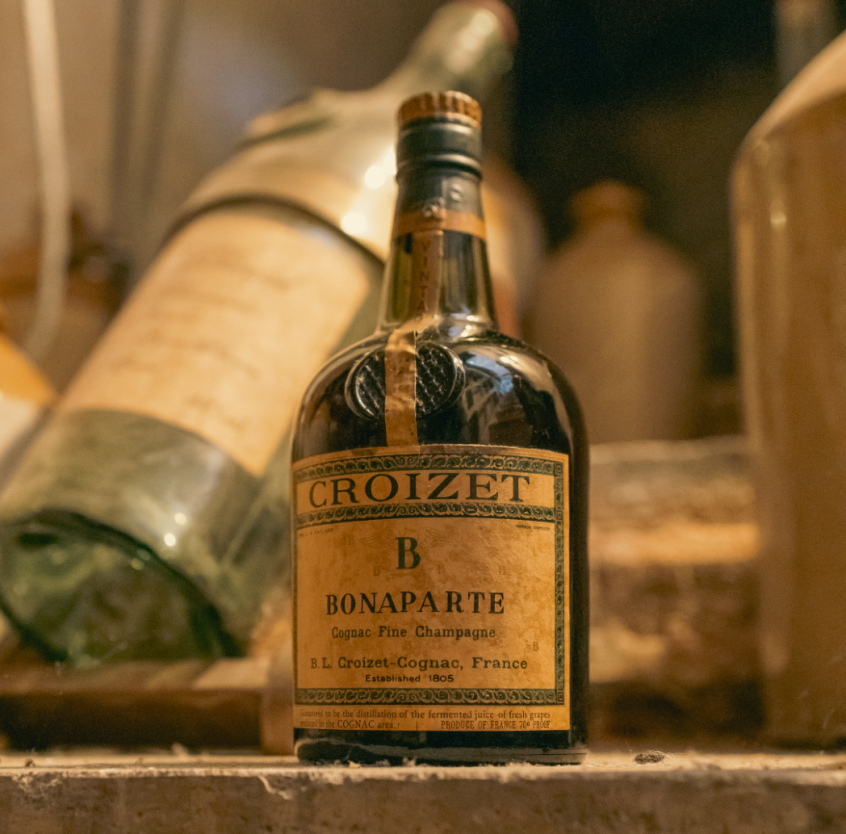Steven Cook – Spirits Specialist
When it comes to brandy, one’s mind is immediately drawn to Cognac. This French region is synonymous with quality, and for good reason. It’s World Cognac Day and we’re taking a moment to celebrate this fine spirit, exploring the historic techniques and strict rules that govern its creation, ensuring its exceptional and consistent quality. The following is not an exhaustive list, but should serve as a handy insight into the intrigue of Cognac.
What is Brandy?
Put simply, to make alcohol, we feed sugar to yeast. The yeast metabolises the sugar, producing flavour and alcohol. Different fruits, grains, vegetables, etc., will influence the flavour created and dictate the category: feed yeast the sugars in grain and you’ve made beer; feed yeast honey and you’ve made mead; and so forth. There are, of course, lots of other factors, such as yeast strain, fermentation times, and more, but the raw material is our key for defining the category.
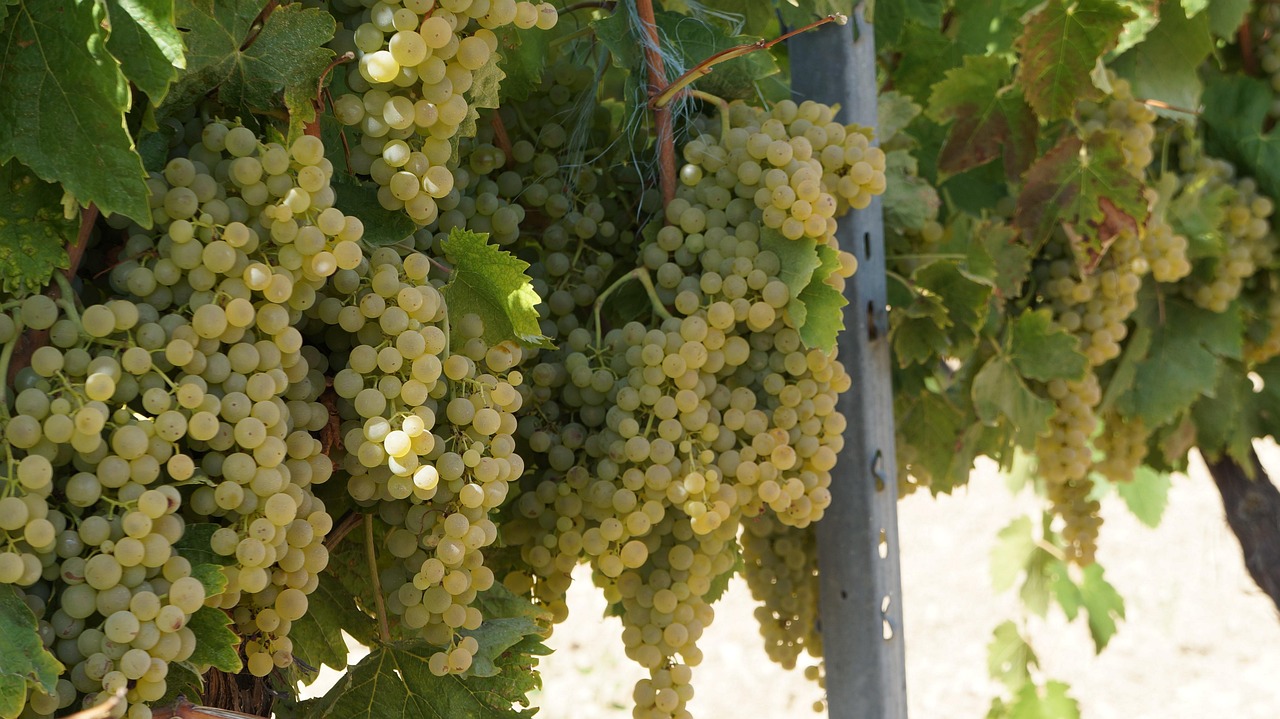
Cognac grapes – Image credit (PhilippeFifties, 2019)
Production of a spirit takes things a little further by boiling off the alcohol and some of the flavour to separate it from water and organic matter, hence the high strength. For brandy, our base is wine, so we’re feeding yeast the sugars found in grape juice before distilling it to concentrate the alcohol and some of the flavours. The resulting unmatured spirit is called eaux-de-vie.
This is the basic premise, but different countries and regions within them will enact variations on the process that create nuance and a signature style.
A Region of Renown
Cognac has strict rules and requirements when it comes to the production of brandy. It is carved up into sub-regions or “crus”, each with its own terroir and reputation for the quality of grapes grown. The top three are:
- Grande Champagne – the highest regarded cru
- Petite Champagne – a strong second to Grande Champagne
- Borderies – the smallest of the three.
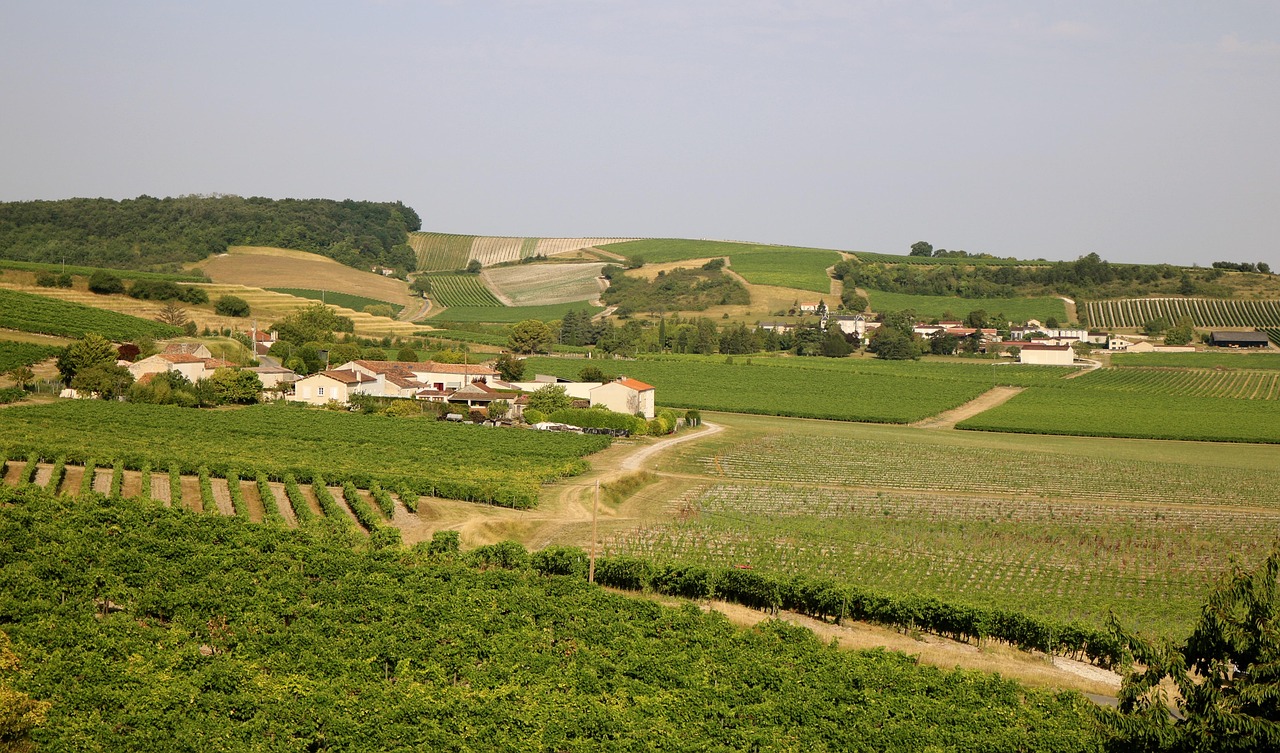
Rémy Martin vineyards – Image credit (Claire-Margaret, 2019)
Grande Champagne is the crème de la crème. Eaux-de-vie from this region is frequently bottled standalone and labelled as such, though you’ll also often see the eaux-de-vie blended with that of Petite Champagne; these will be labelled as Fine Champagne Cognac. The same goes for Petite Champagne. It is rare to find Cognacs derived solely from eaux-de-vie from the Borderies; they’re often blended with grapes from other regions.
There are six crus all told, growing a select variety of grapes particularly suited to cognac production. Ugni blanc dominates the landscape, present in 98% of vineyards, but other varieties include Folle Blanche, Colombard, Montils and Folignan (Cognac.fr, n.d.). Only grape varieties presented outlined in the Cognac Protected Designation of Origin (PDO) may be used.
Traditional Distillation
We have touched on the basic premise of distillation, but Cognac has rather specific rules when it comes to refining its wines to an eaux-de-vie. Scotch whisky fans may be familiar with pot stills, the traditional equipment that gives a fuller-bodied spirit than the more modern column stills. However, Cognac takes things even further: Cognac must be produced using a direct-fired Charentais still.

A Cognac Charentais including kiln (right), wine heater (middle left) and worm tub (left) – Image credit (Elementus, 2014)
What’s direct-fire, we hear you ask? Well, we are separating alcohol and flavour out of our wine using heat, so we need a source of heat. Most spirits producers around the world will use some kind of steam injection and/or heating element that sits in the alcohol feed, but in the earliest forms of distillation, it would be common for distillers to sit their stills directly over a fire, not too dissimilar to cooking. The process was refined somewhat to include more polished kilns as time progressed, but ultimately a roaring coal or wood fire would serve as the source of heat.
It’s ok to be sceptical and ask whether this actually makes a difference or whether it is tradition for tradition’s sake. The nuances and variables involved in creating flavour are vast, but there is a notable effect that is often solely ascribed to direct-fire: the Maillard reaction. These reactions occur due to the uneven and volatile nature of the fire, creating hot spots on the equipment that cause the amino acids and sugars in the wine to react and create compounds that give a toasty and toffee note. Those who enjoy a spot of cooking may be familiar with this process.
A Charentais also includes a few other notable elements, including a wine-heater (exchanges the heat from the distilled vapours to the incoming wine – helping to purify the spirit as well as warming the incoming wine for the next batch) and a worm tub condenser. The latter is, again, quite an archaic means of cooling the alcohol vapour, less efficient than modern condensers, which in turn leads to a fuller-bodied spirit with robust flavours.
Maturation
So far, we have made eaux-de-vie in alignment with Cognac rules, but there’s a final step to crafting our masterpiece: maturation. This process won’t be too unfamiliar to spirit fans, but as you have no doubt come to expect by now, Cognac producers have to follow rather strict disciplines.

Cognac maturation – Image credit (Elementus, 2014)
Similar to American Bourbon producers, Cognac must be matured in virgin oak. These are casks that have never been used to mature a liquid before, often referred to as “new” oak. However, in typical Cognac form, the oak must be sourced from France. Specifically, the oak must be from either Limousin or Tronçais.
Again, this decision is not an arbitrary one. European oaks (Quercus Patraea and Quercus Robur) impart distinctly different characters to their American counterpart (Quercus Alba). Most notably, European oak is known for giving greater tannic influence to maturing wines and spirits, a compound that gives structure and astringency. For the scientifically minded, this is due to the presence of two isomers of ellagitannin: castalagin and vescalagin; American Oak, on the other hand, only has monomer ellagitannins, resulting in less tannic extraction.
The Limousin and Tronçais areas are further south than some of the other commercial oak forests of France. The warmer temperatures cause the oak to grow faster. This results in a wider grain in the oak, allowing better extraction of the tannins than the more aromatic, tighter grain oaks of Northern France.
Age Classifications
With our eaux-de-vie now resting in fine French oak, we must now decide when to bottle. Cognac avoids the specific age statements favoured by spirits such as Scotch whisky. Instead, one may find the following terms on the label, on which we shall elaborate:
- VS (Very Special) – Aged 2+ years
- VSOP (Very Superior Old Pale) – Aged 4+ years
- Napoleon – Aged 6+ years
- XO (Extra Old) – Aged 10+ years
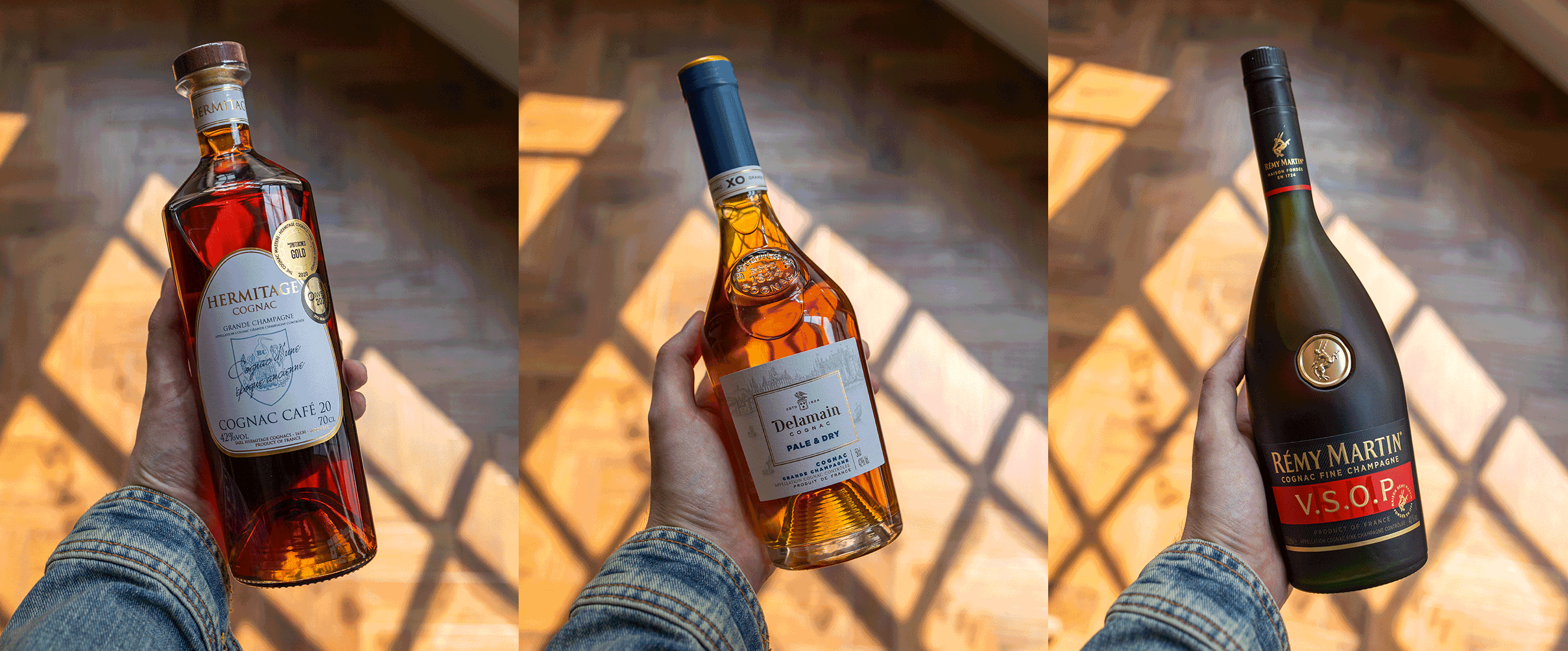
Fine Champagne VSOP (Right), Grade Champagne XO (Middle), Grande Champagne 20 Year Old (left)
VS and VSOP are rather ubiquitous and easy to understand – setting aside the nuance of each producer – but Napoleon and XO often cross paths, creating muddy waters for the consumer; one may find Napoleons of 15+ years and XOs of exceptionally old age, and so forth. In addition to the above, there is vintage Cognac, whereby the eaux-de-vie must be sourced from a single year’s harvest and the bottle will bear the year of harvest. There are some exceptionally aged examples of vintage Cognac, and it is not uncommon for the contents to be that of a single, non-vatted cask.
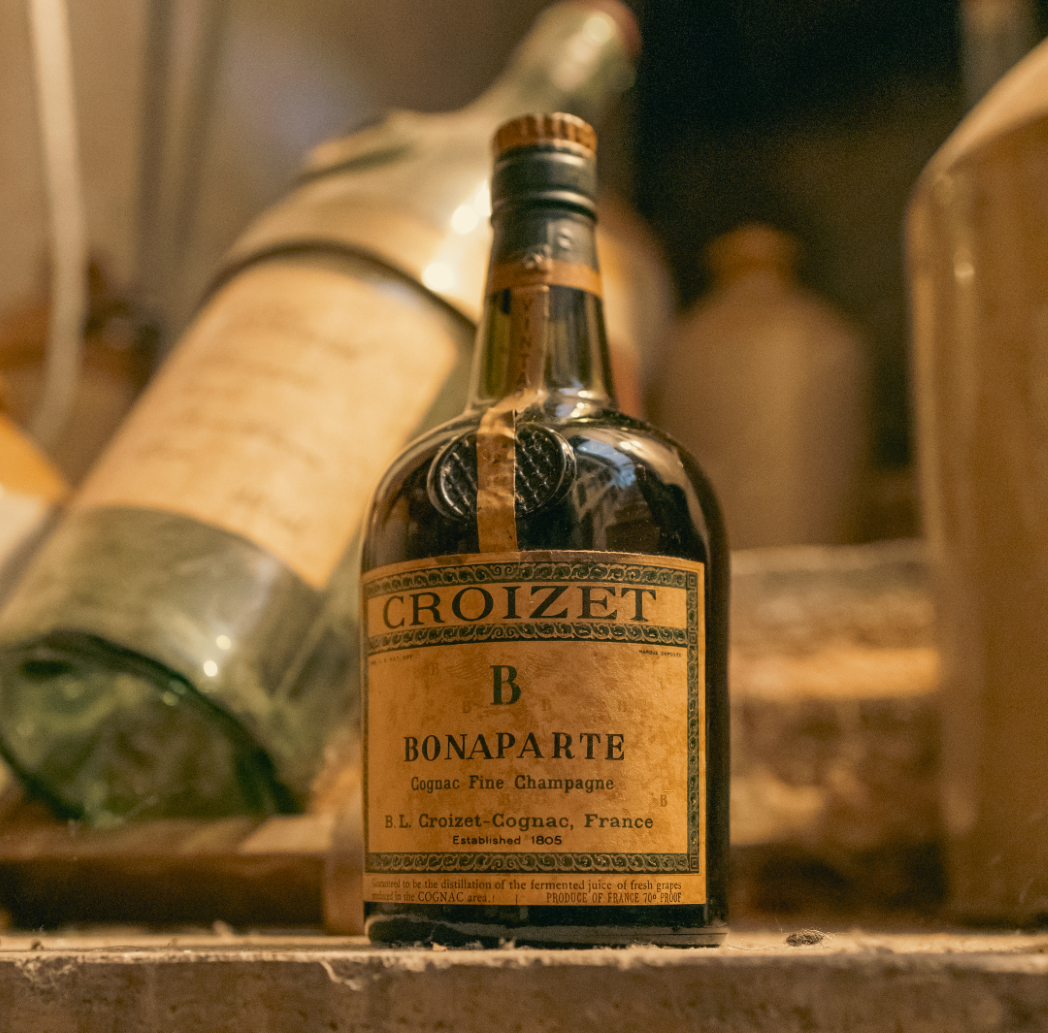
A rare 1906 vintage of Fine Champagne on sale at Nickolls & Perks
Interestingly, a Cognac’s age is not recorded from the moment it enters cask, in the way that rums and whiskies are. Instead, Cognac’s age is determined by financial year, i.e. incrementing at the start of every April.
Raise a Glass
It should be apparent now that Cognac’s world-class reputation is the result of fastidious care and commitment. This diligence means that Cognac enjoys a clear distinction from other brandies in France and beyond. One may, of course, find notes of grape – as you’d expect of something produced from grapes – but with a fuller body than that of brandies such as Armagnac. The intense oak influence will provide grip and caramel, with older age statements presenting enigmatic notes of coffee, cigars and dark chocolate. Despite the strict parameters Cognac production operates in, the category bears a wonderful breadth that may keep the enthusiast engaged for a lifetime.
The traditional practices of Cognac result in a tipple of deep and rich flavours, exuding robust characters that allow for both flexibility in crafting fine cocktails as well as a neat pour that can turn any evening into a celebration.
If you’d like to toast the occasion, we’re running a discount on select Cognac lines for a limited period – Click here to browse sale.
References
Claire-Margaret. (2019, October 27). vines vineyard hennessy cognac. Retrieved from Pixabay: https://pixabay.com/photos/vines-vineyard-hennessy-cognac-4579062/
Cognac.fr. (n.d.). Cognac grape varieties. Retrieved from Cognac: https://www.cognac.fr/en/discover/the-cognac-region/cognac-grapes-varieties/
Elementus. (2014, June 19). cognac production france french. Retrieved from Pixabay: https://pixabay.com/photos/cognac-production-france-french-371757/
elementus. (2014, June 19). storage cognac rare old vintage. Retrieved from Pixabay: https://pixabay.com/photos/storage-cognac-rare-old-vintage-371759/
PhilippeFifties. (2019, 12 10). Cluster Grape Fruit Vineyard. Retrieved from Pixabay: https://pixabay.com/photos/cluster-grape-fruit-vineyard-4682994/

